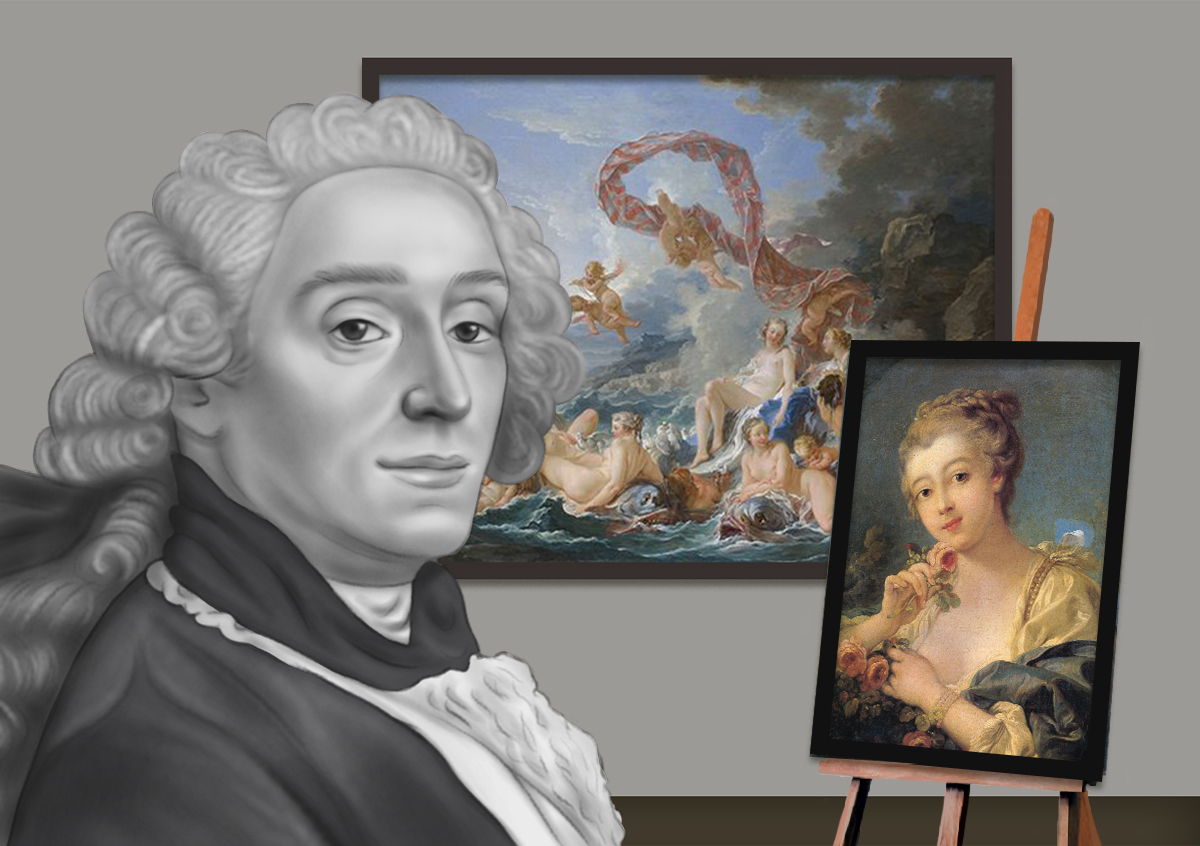He illustrated the works of La Fontaine: Who is François Boucher?
Boucher, who also made interior decorations, furniture, porcelain, and fan decorations, was the chief decorator of the Royal Academy of Music between 1744-1748.

(1703-1770) French painter and decorator. He is one of the representatives of the Rococo style. He was born on September 28, 1703, in Paris. His father, Nicolas Boucher, a craftsman, drew motifs for embroideries and traded stamps. When François' talent became evident at a very young age, he started working with his father and learned the first knowledge of his profession from him. It soon became clear that this training would not be enough, and Boucher was assigned to a master named Lemoyne. He imitated his teacher's style so well that the painting, The Birth of Adonis, which he made in those days, was thought to belong to Lemoyne by experts, although it bore his signature. He was seventeen when he finished his first painting, The Trial of Suzanne. Three months later, he left Lemoyne's workshop and became a student of the engraver Cars. Here he reproduced Watteau's works and printed 125 engravings. He was also painting. In 1723 he won the Academy Award of Rome.
François Boucher (29 September 1703 – 30 May 1770) was a French painter, draughtsman and etcher, who worked in the Rococo style. Boucher is known for his idyllic and voluptuous paintings on classical themes, decorative allegories, and pastoral scenes. He was perhaps the most celebrated painter and decorative artist of the 18th century.
In Paris, artists were allowed to hang their paintings in front of houses in the Dauphine Field, where religious ceremonies were held, on the day of Fete Dieu, according to an old tradition. Boucher suddenly became famous after participating in such an exhibition once. He went to Italy as he wanted for a long time. He lived in Rome for five years and fell under the influence of Italian art. During his stay here, he made paintings on history and religion. He returned to Paris in 1731; He illustrated the works of Moliere and La Fontaine. In 1734, at the age of thirty-one, he was admitted to the Academy with his painting Renaud and Armide. In the same year, he married Marie-Jeanne Buzot. His wife modeled for him in many of his paintings.
Boucher, who also made interior decorations, furniture, porcelain, and fan decorations, was the chief decorator of the Royal Academy of Music between 1744-1748. For theatrical plays, he painted charming hills, villages, and cottages, reflecting the pastoral taste of the period. His reputation was growing.
After 1745, all of his designs were bought. In 1755, an assistant inspector was appointed to the workshop where tapestries were made. Again in those years, he became the chief painter of the king, he was given a room in the Louvre and was paid. He was supported by the Marquise of Pompadour, of which he painted seven, and by the palace, and he received official orders.
In 1765, the change of fashion and the rise of the painter Creuze (1725-1805) to the fore and the death of some of his students dealt him a bad blow. He died on May 30, 1770.
Boucher also painted fairy tales, bathing women, and country paintings as well as large allegorical paintings.
Nature, women, and life only interested him in their beautiful aspects. It has neither the depth of Watteau who preceded it, nor the mighty joy of Fragonard after him. However, it is an indispensable link in the chain that starts from Watteau and ends in Fragonard. Like Claude Lorrain, he painted the source of light, not the light itself, but the effect of light on objects.
